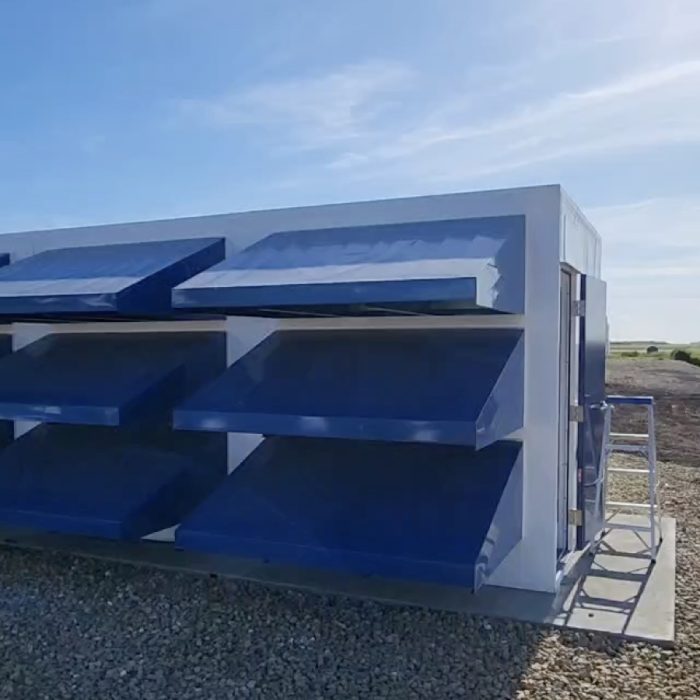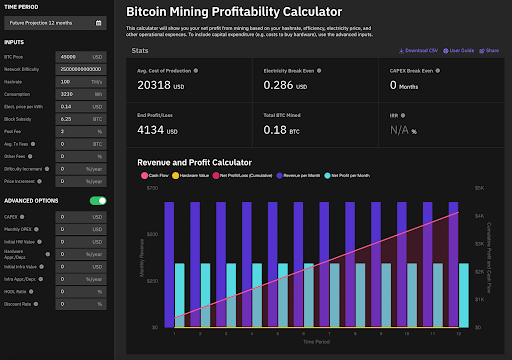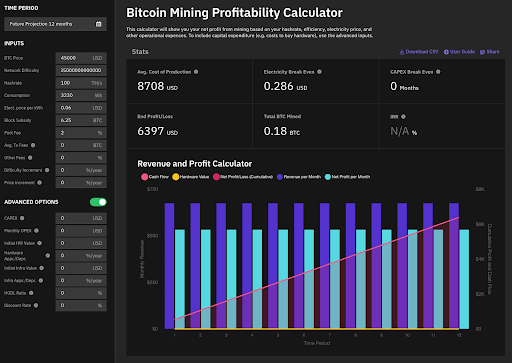
Unbanked | Lauren Sieckmann on Bitcoin for Everyone
Unbanked: Bitcoin’s Story for Everyone Digital Gold Podcast: Bitcoin on the Big Screen with Lauren Sieckmann In this episode of the Digital Gold Podcast, JohnPaul Baric sits down with...
Ever since Bitcoin mining was banned in China during 2021, investors have been taking advantage of the opportunity and pouring money into mining operations elsewhere in the world, especially in the US.
Bitcoin mining isn’t the easiest business model to understand and it has a lot of moving parts, but it can be extremely lucrative and a great way to accumulate BTC for Bitcoin bulls. In this article we’ll discuss all of those moving parts to help you decide whether an investment in Bitcoin mining is ultimately a good idea or not. We’ll also touch on some ways to mitigate the risks that can be involved.
Crypto Miner MiningStore shut down most mining operations in order to conserve electricity as a wave of cold and ice is set to wreak havoc on the Midwest power grid.
On Wednesday morning MiningStore began load-shedding to reduce power to Bitcoin mining servers at the MiningStore mining facility located in Grundy County Iowa. MiningStore shut down most of their Bitcoin mining operations for over 8 hours and intends to reduce power consumption to their mining operations throughout the winter freeze.
Iowa electric cooperative is a group of not-for-profit, member-owned electric co-ops which powers the lives of 650,000 Iowans throughout the State and is committed to delivering power that is safe, affordable, reliable, and environmentally responsible.
The majority of cooperatives in Iowa were established in the 1930s and 1940s when farmers united as cohorts to gain access to affordable electricity. Since inception, electric co-ops have been member-owned and locally governed.
“MiningStore as a member of the Grundy County Cooperative has volunteered to reduce its power consumption in order to support the initiative for responsible environmentally friendly use of energy”, said JP Baric, CEO of MiningStore.
In February of 2021 blizzard like conditions in the state of Iowa caused blackouts in Electric Cooperatives across the state, leaving 1000’s of homes without power. In order to save the whole system from losing power, rolling blackouts were implemented to cut load and demand purposely.
The MiningStore 5.4 MegaWatt mining facility utilizes stranded energy to power bitcoin mining servers. Stranded energy is surplus energy that doesn’t have a destination on the power grid where it can be deployed or stored. Normally this energy goes to waste, instead is utilized to power the mining facility, in Grundy County.
“We understand with extremely cold temperatures, the grid will demand more supply and we are committed to responsible use of energy in these types of situations. We are capable of cutting our load in under 30 minutes and we will scale down our load in its entirety if needed. ” stated JP Baric.
“Bitcoin miners are often portrayed as bad actors without any concern for the massive amounts of power mining operations consume. In the case of the MiningStore mining facility here in Iowa, this couldn’t be further from the truth. Our mining operation is powered by stranded surplus wind energy and we ultimately convert wasted energy into economic freedom for our clients and partners.” Baric Also added.
One of the most influential components to the profitability of your Bitcoin mining rig would be the network difficulty. Difficulty is basically a measurement of how hard it is to mine Bitcoin as everyone else is trying to mine at the same time. In short, difficulty goes up when the total network hashrate increases. As more people start mining and/or as existing miners scale up, that causes an increase in hashrate, and the pre-existing mining machines will then have a smaller “share” in the network. Higher difficulty = less profitability per mining rig.
As a miner, it’s safe to assume that difficulty will increase significantly over long time periods as mining continues to be adopted. With manufacturers like Bitmain (makes the Antminer S19 series) and MicroBT (WhatsMiner machines) innovating to make better, more efficient mining machines, and with semiconductor chip factories popping up in the US, there could certainly be more availability to mining machines in the coming years. All of this spells a high potential for existing miners to scale and/or mine more efficiently. Without modeling for mining difficulty to increase over time, you’re likely to overestimate your profitability.
Thus, in the long run, it’s better to mine as early as possible. Not only do you beat others to coins, you mine them at a discount compared to later participants. However, there are also times when difficulty decreases. In the Summer of 2021 when China banned Bitcoin mining, Chinese miners were forced to either relocate or liquidate. While their machines were offline, the network hashrate and difficulty decreased significantly, making all the remaining miners more profitable as a result.
Another key component Bitcoin miners must be aware of is Bitcoin’s price. It’s likely true that if you are a miner, you’re going to be bullish on BTC price, and expect “Number go up!” over time. While Bitcoin’s historical numbers show a compounded average growth rate of 197% per year, the price can be unpredictable, especially in the short term.
BTC price can be volatile with large swings in either direction at any point. That’s why it’s good practice to first be conservative and model your mining business as if BTC price will not increase over time while difficulty does. Modeling like this helps you decide if you would be comfortable during a “bearish” scenario.
Other useful perspectives to consider can be found when analyzing events where price and difficulty increase roughly proportionately, or when price increases faster than difficulty does. How do these scenarios affect your outlook on mining in the long term? In our article Why Bitcoin ASIC Prices Can Reach New Highs In 2022, we took a deep look at why difficulty and BTC price not only affects profitability but also ASIC (mining hardware) pricing.
For a more straightforward approach, a great tool is the Bitcoin Mining Profitability Calculator from Braiins. With this calculator, you’re able to adjust the difficulty, BTC price, ASIC pricing, electricity prices and more to predict profitability over time. Which brings us to the next factor in Bitcoin mining.
One of the top priorities new miners have is to find and utilize a cheap source of energy. This is because Bitcoin mining machines tend to soak up lots and lots of power, making energy costs the majority of a miner’s operational expenses. To minimize energy expenses, miners try to find the cheapest energy source possible to allow them to be more competitive in the long-term.
The average cost of electricity (residential) in the United States is $0.14/kWh. The cost per kWh most miners feel competitive at is about $0.06/kWh or less. Of course, mining can still work at higher electricity prices, but a greater energy cost means more risk. Our Managed Mining services operate at roughly $0.042/kWh, thanks to our green and renewable energy sources.
But to better understand the impact of energy costs, let’s take an example. One of the best selling mining machines, the Antminer S19, has a maximum hashrate of 100 Th/s, power consumption of 3230W±10%, and power efficiency of 32.5 W/Th. Using the Profitability Calculator mentioned above, we’ll calculate the differences in operating expenses for one year for residential and industry standard electricity prices. For simplicity’s sake, we’ll calculate using a constant network difficulty of 25T, and BTC price of $45K.
Electricity Price : $0.14/kWh

Electricity Price : $0.06/kWh

Clearly, the price of electricity has a massive effect on the risk a miner takes on, even when running just one machine! Despite the unrealistically frozen difficulty and BTC price inputs, the average cost of production for 1 BTC is reduced by $12k, leading to over $2k higher-end profit for the operation with $0.06/kWh electricity.
The other common source of OpEx for mining operations is labor. However, on a per-machine basis, labor is likely an insignificant expense compared to electricity costs.
When it comes to upfront costs, a good chunk of expenditures should be reserved for the infrastructure required to house your Bitcoin mining rig. Mining facilities must be robust enough to protect your mining machines, and also need to be capable of meeting the demands of ASICs.
Modern bitcoin mining machines such as Antminer S19’s, WhatsMiner M30S’s, and Avalon 1246’s, all consume upwards of 3000W per unit. As a result, they have extremely high heat output and need to be cooled constantly to maintain optimized performance. Aside from the demanding air flow requirements, the electrical engineering needed to deliver large amounts of power reliably to all of your machines can be complicated. The good news is once you’ve sufficiently constructed your facility to meet your ASIC’s demands, the output from your mining machines should reward you.
Another bonus of investing in proper infrastructure is it retains long-term value and can (hopefully) be used for many generations of Bitcoin machines.
Although infrastructure costs shouldn’t be dismissed, the purchasing of mining hardware is where most of a miner’s risk is placed. Miners generally take 1-2 years to break-even after purchasing ASIC hardware. But being bullish about BTC price over time is what drives investment in mining. If BTC price goes up faster than difficulty, it’s much easier for a miner to be profitable.
These mining machines do well at retaining their value or even appreciate significantly in short time periods. The key is creating sufficient infrastructure to keep these machines running efficiently and optimally.But which mining machine will be best suited for your mining operation? We’ve created a few guides to shed some light on Bitmain’s Antminer S19 series, and have also discussed other popular options like the newest-generation Antminer S19 XP, the Antminer S19J, and several others. Our Learn section also has several other articles that can help you decide how you’d like to mine!
While it is entirely possible to invest in Bitcoin mining, running a physical operation yourself is an entirely separate endeavor. Between the physical components of Bitcoin mining (purchasing and maintaining ASICs mining machines, obtaining an inexpensive and reliable energy source, and constructing and maintaining the infrastructure) and the psychological requirements needed to monitor BTC price and mining difficulty, mining is definitely a full-time job if done at scale. But the rewards for sticking around can easily be just as sweet.
For those who want exposure to this lucrative industry without all the hassles of building out infrastructure and maintaining a whole mining operation, our Managed Mining program is for you. With Managed Mining, we work for you to take all the stress and hassles out of the equation. We mine with clean, low-cost energys, constant machine monitoring, and we utilize in-house infrastructure to host your machines. All you need to do after you invest is sit back and reap the returns.For more information on Managed Mining, visit our site or speak with a representative.
Unbanked: Bitcoin’s Story for Everyone Digital Gold Podcast: Bitcoin on the Big Screen with Lauren Sieckmann In this episode of the Digital Gold Podcast, JohnPaul Baric sits down with...
Why Bitcoin ASIC Prices Can Reach New Highs in 2022 By Spencer Sherwood Much like traders and investors speculating on future Bitcoin prices, those in the Bitcoin mining industry...
How to Identify Underperforming Bitcoin Mining Setups A Self-Audit for Higher ROI In Bitcoin mining, performance issues aren’t always obvious. Inefficiencies can quietly erode profitability for months before they...
Decoding Bitcoin Mining: Is It a Hamster Wheel or a Money Printer? Digital Gold Podcast: How Penny Ether Turns Data into Profits in the Bitcoin Mining Industry: Strategies, Market...
The Future of Crypto Media and Marketing with Kyle Reidhead Co-Founder of Milk Road Building Trust, Brand, and Community in the Next Wave of Crypto In this episode of...
By Adan Kohnhorst Oslo Freedom Forum x Bitcoin In Norway last week, the Oslo Freedom Forum gathered to discuss human rights and the fight against tyranny. In a series...